We analyzed 10,000 companies that found PMF, such as Hey, Stripe, and Vanta, and here's what we discovered about the motivation behind purchasing services. Our conclusions will help new and established companies attract customers.
This article will discuss why customers choose specific products and are willing to spend money.
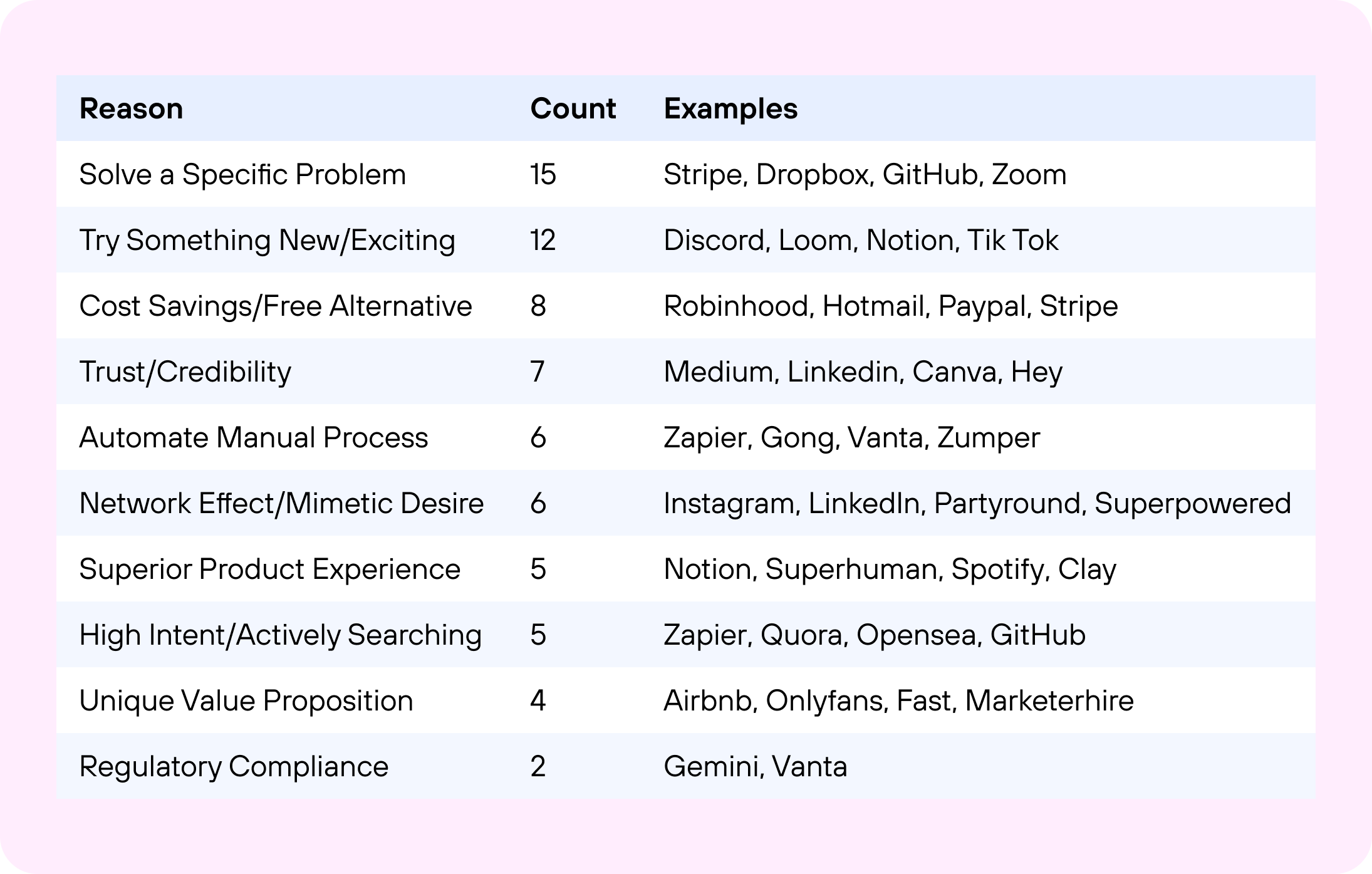
Six main reasons why customers buy
Understanding why customers buy your product is crucial for your business. It's about connecting with their needs and desires. Here are the factors that drive their decisions and how you can make your product more appealing.
- Solve a specific problem.
In this case, the value chain will help determine a company's actions to provide its product to the market and solve people's specific needs.
A company's whole activity can be divided into sequential parts (chain). Analyzing this chain will show where to optimize or build new processes, especially when optimizing or creating new ones. Identifying and resolving customer problems through value chain analysis is a strategic move that can significantly improve your competitive advantage.
The value chain is a company's activities to provide customers with a product or service. It demonstrates how a business adds value at each stage. Let’s see how Airbnb does this.
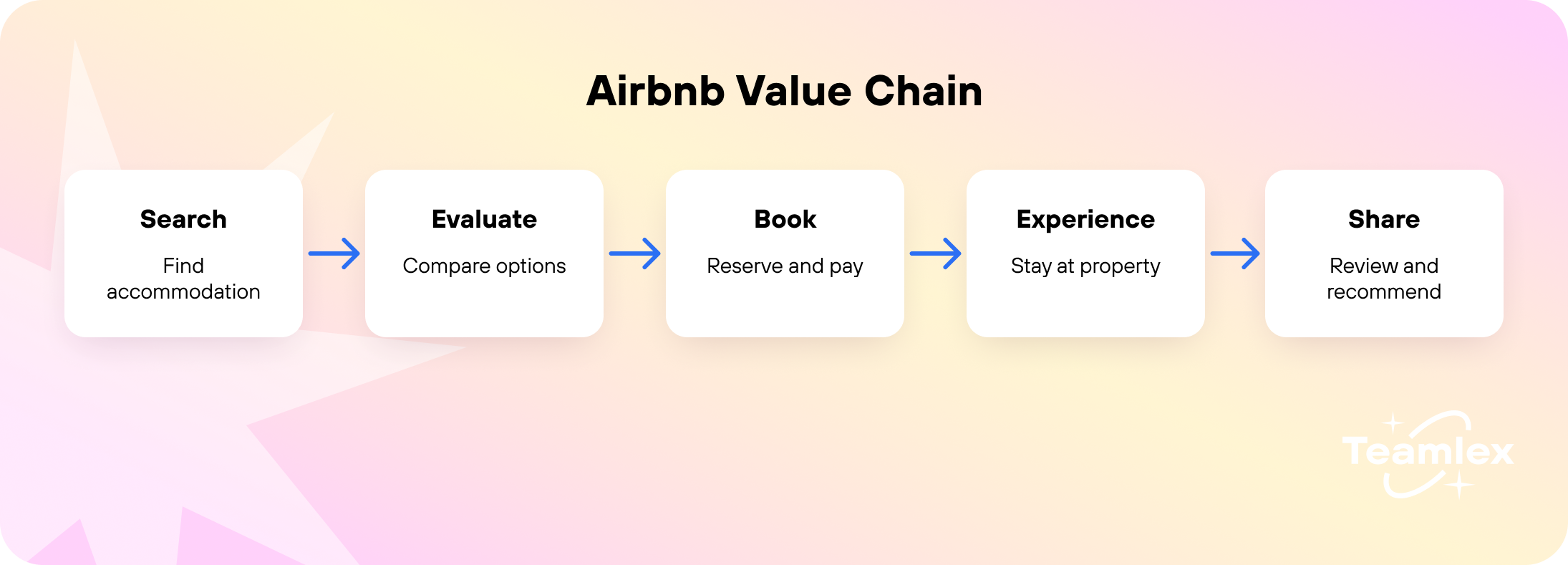
Before Airbnb, hotels were often expensive, especially in popular places or busy times. Airbnb changed this by offering cheaper options. It's great for people because it saves money, has lots of choices, and prices can be comparable.
By fixing these issues and offering these benefits, Airbnb made a new product for travelers who want cheaper and different places to stay. You can choose from many options, pay securely, and connect with hosts for a great experience. Now, let’s see what Uber offers people.

Before, customers had to call a service to get a taxi, explain where they were and wanted to go, and then wait without knowing when the cab would arrive. The driver and the passenger couldn't see each other's locations in real time, which sometimes caused confusion and wasted time. This system needed to be clarified and often made for frustrating experiences for passengers and drivers.
Uber made it more accessible. The app lets riders quickly request a ride and automatically share their location with nearby drivers. Passengers can track the driver on a map so they know when to expect them. Drivers receive clear, step-by-step directions to pick-up and drop-off locations, reducing confusion and saving time. This system makes it easier and more efficient for riders and drivers, solving many problems associated with traditional taxi services. Uber offers on-demand rides with transparent prices, cashless payments, and a rating system to keep the service quality high.
Finding weak points in serving customers can also lead to new business opportunities. Entrepreneurs always look for ways to solve users' problems. When customer needs change, new businesses can emerge, like Loom.
Loom solves the problem of inefficient, traditional workplace meetings. Many employees spend a lot of time in meetings, often needing to work better and produce better results. Take a look at the company’s value chain.
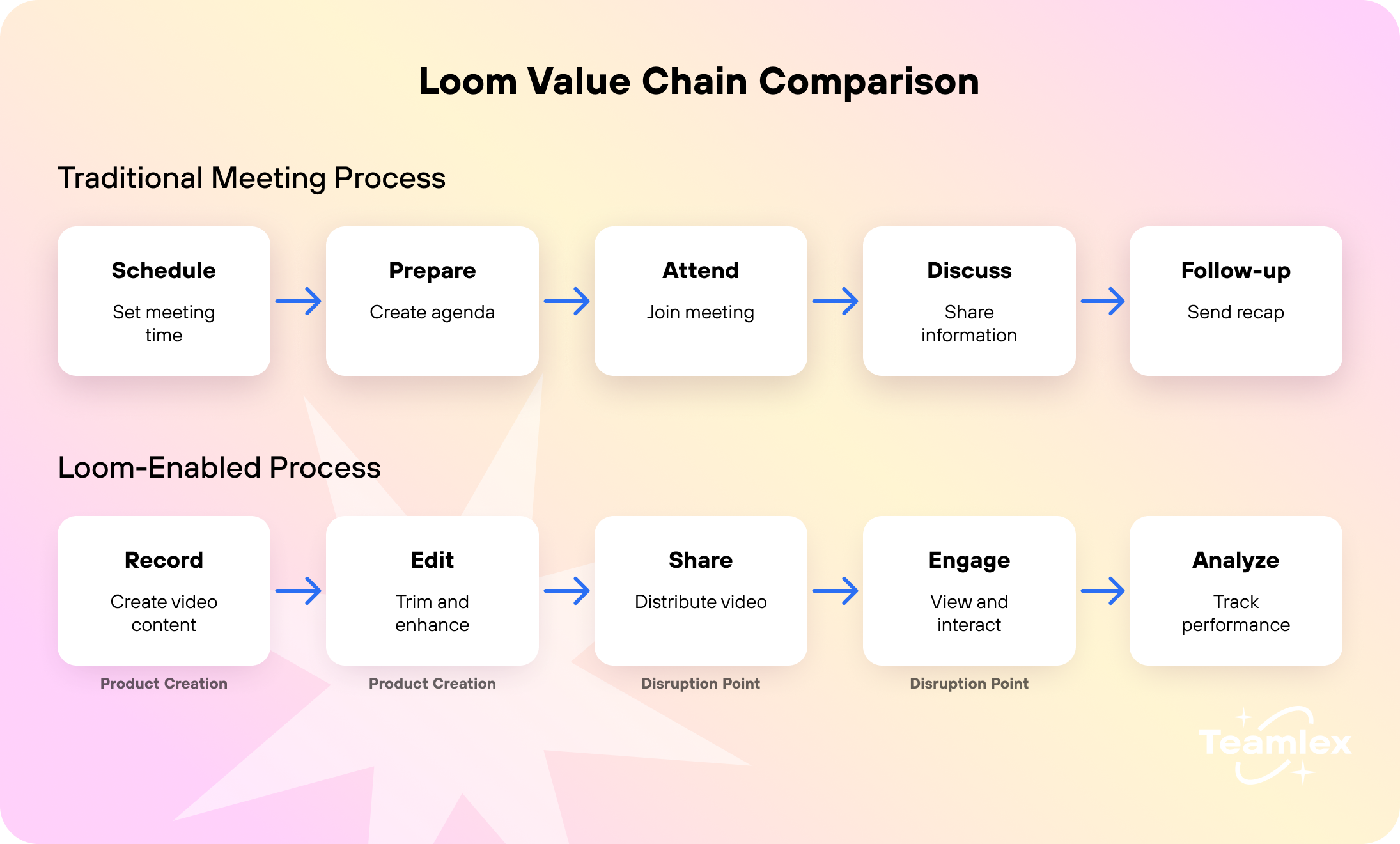
Loom transforms traditional meetings into videos you can watch when you have time. This approach saves customers time, and the company shows how many meetings were eliminated. Unlike traditional meetings, the platform enables users to record, edit, and share video content that others can engage with on their own time while also providing tools to analyze the content's performance and impact.
You can create a value chain independently, but we recommend contacting professionals. A third-party audit is always a refreshing perspective.
Solving your customers' specific problems is one thing, but creating a user experience is also essential.
- Superior product experience
According to Amazon, 88% of online consumers are less likely to return to a website with a bad user experience. Simplifying existing products and focusing on essential features for specific markets is an effective strategy for improving UX.
Noticing that many CRM tools needed to be simplified for small businesses, LessAnnoying CRM found its niche. The platform stripped down unnecessary features and honed in on core functionalities.
LessAnnoying is for small businesses and companies with under $10 million in revenue. By focusing on simplicity and core functionality, it has created a product that better serves the needs of its target market.
{{cta}}
- New exciting product
When new products are noticeably different from what's already available, they often grab a lot of attention and quickly become popular. This popularity follows an adoption curve, where other groups use the product at different times. Early adopters and innovators are the first to embrace the new product, driving its initial success. It happens because people are naturally curious and attracted to new experiences. Let's use Prisma as an example to explain how this concept works.
Prisma uses AI to turn photos into artworks with unique filters. The app is easy to use, making it accessible to a broad audience. Users don’t need technical skills to produce impressive results, which adds to its appeal. The combination of simplicity and powerful effects made it an instant hit.
The app's journey on the adoption curve shows how different groups contribute to a new product's success. Its unique concept and viral spread caught media outlets' attention, further amplifying its popularity. Positive reviews and coverage in tech blogs, news sites, and social media platforms helped Prisma reach an even larger audience.
{{resource}}
- Cost savings
Many people like products that work like famous ones but cost less. It suits people who want to save money but still want good quality and features.
Tally is cheaper than Typeform and has similar features. It suits people who need to make forms but want to spend less money.
Tally is a good choice because it offers valuable features cheaply. It also has good analytics, which helps users understand how well their forms work.

Tally offers a free plan with unlimited forms and responses. Typeform's basic plan costs about $23 per month and limits responses to 100. Tally also includes basic analytics and various integrations at no extra cost, making it a more affordable choice for users who need comprehensive form-building features. Choosing Tally over Typeform can lead to significant cost savings without sacrificing essential features.
- Automate manual process
Automating processes can reduce errors by up to 80% compared to manual methods from IBM statements. Customers are always looking for ways to streamline their workflows.
Artisan has capitalized on this by automating one of the most tedious processes for B2B SaaS companies: outreach. By leveraging AI and data providers, Artisan offers a comprehensive solution that handles everything from lead generation to personalized messaging, effectively replacing the need for a dedicated specialist.
For instance, a platform like Apollo can simplify outreach processes, too. This platform uses AI to update its database of over 220 million contacts, eliminating manual research and data entry. Its AI algorithms identify ideal prospects, personalize email templates, automate follow-up sequences, and provide insights on campaign performance.
Traditional customer outreach is time-consuming and leads to errors because it requires manual tasks such as prospecting, data entry, and follow-up. Artisan's automated approach streamlines this process with AI, efficiently handling lead generation, personalized messaging, and follow-up. This automation reduces manual work by 80%, improving customer experience and freeing time for strategic tasks. As a result, companies can save significant time and resources by communicating effectively with their customers.
- Network effect
The power of community and trends can help a product become popular. When more people use a product or service, its value goes up. When a product is widely distributed, people get excited to try and be involved, and as a result, the demand for the product increases.
Clubhouse started with an “invitation-only” system that made the app seem exclusive. This approach created interest and curiosity because it was only available to some people.
People are afraid of missing out on something exclusive. This psychological motivator is called FOMO. It makes people want to be part of a trend or community so they don't feel left out. As more people talked about Clubhouse and shared their experiences, those who had yet to join the platform were strongly encouraged to do so.
Key takeaways
Knowing why customers buy your product helps you improve your marketing. Solve problems, save money, or create a great user experience. Meet your customers' real needs and wants.
Here's a quick overview of each factor to help marketers and entrepreneurs understand and use their strategies.
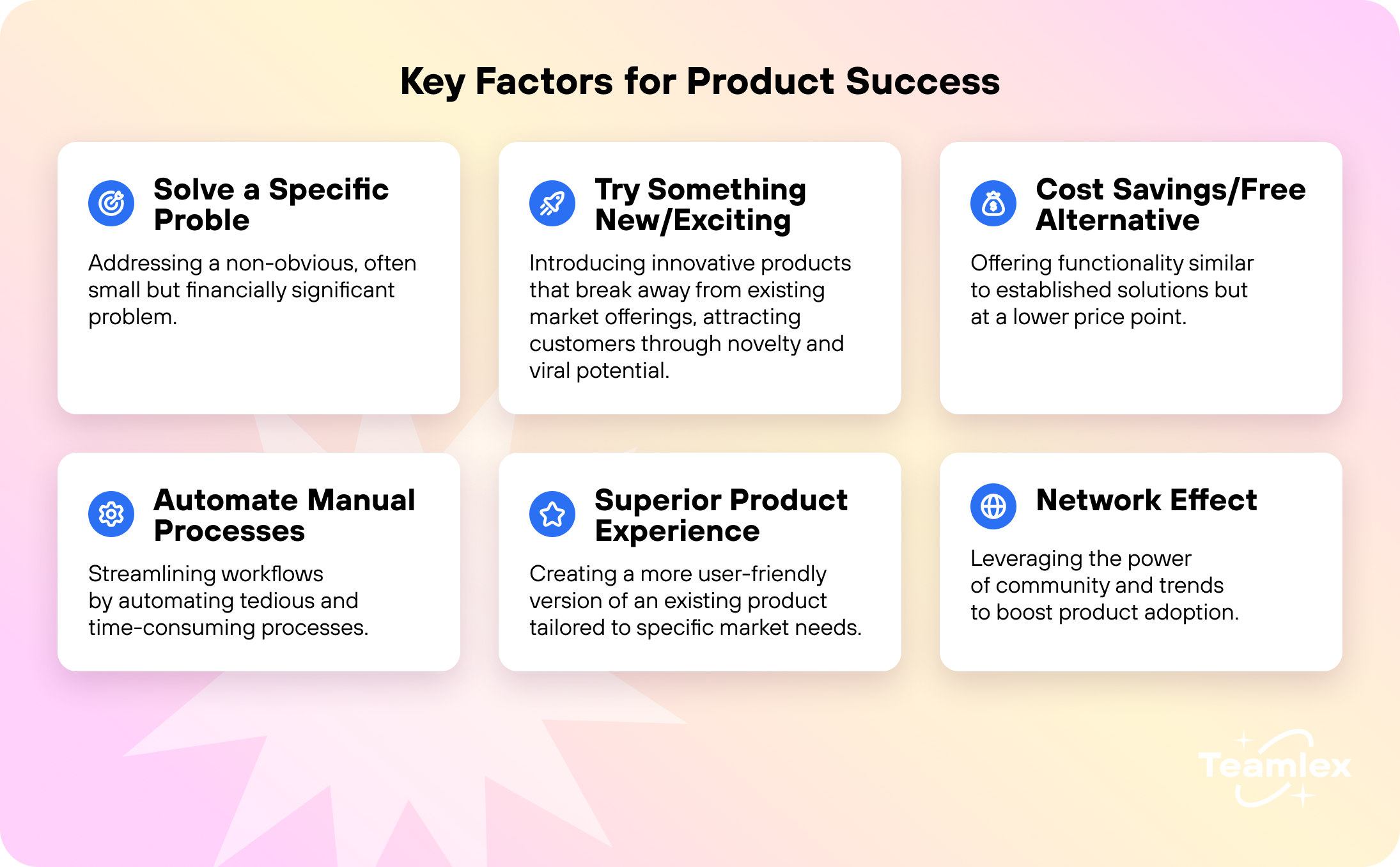
Satisfy your customers' needs. Make a product that solves their problems.












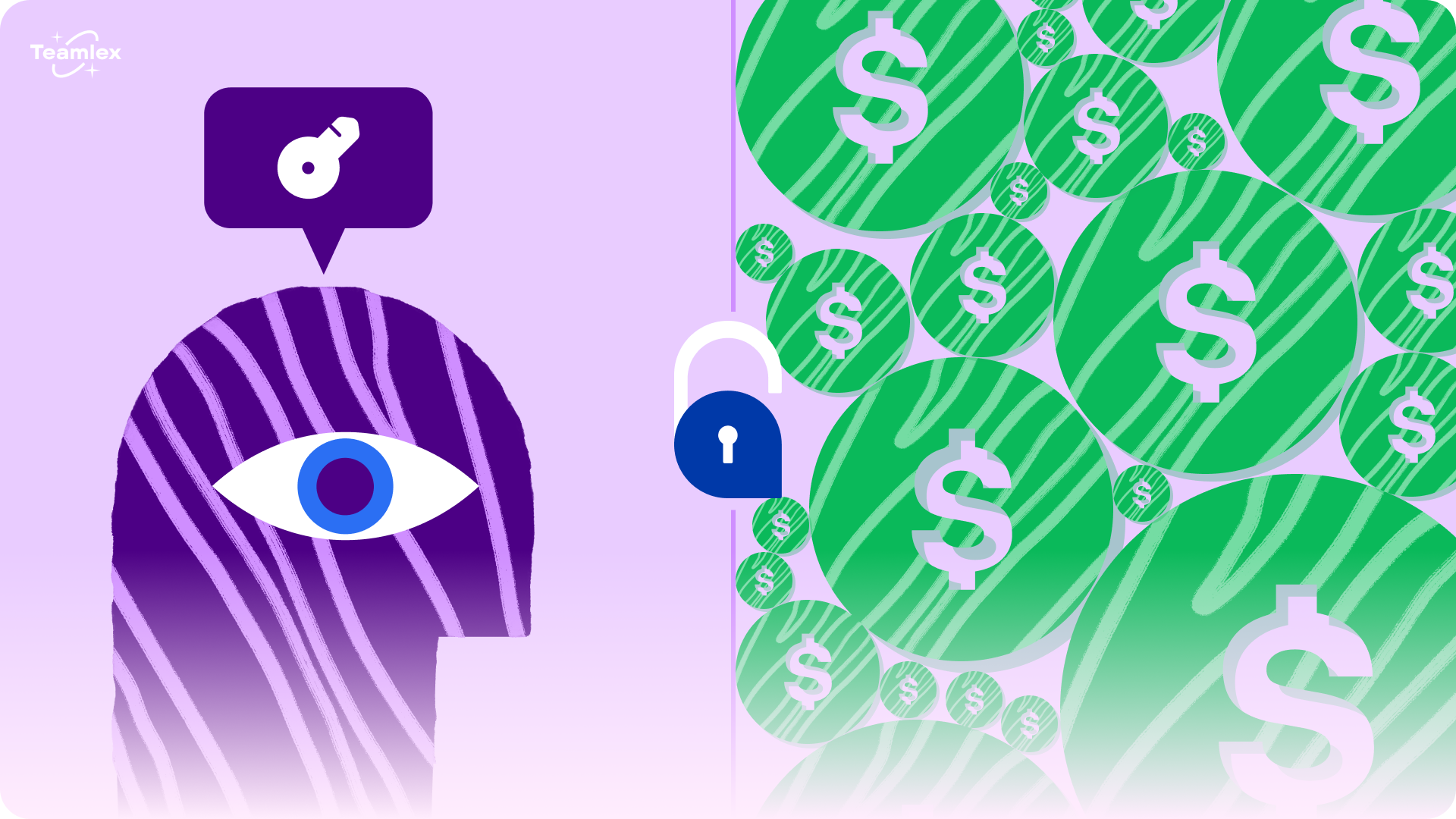









5